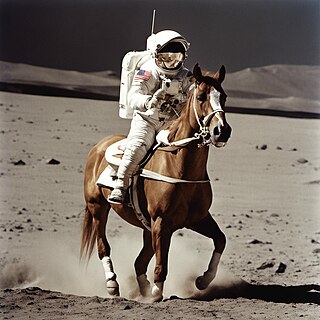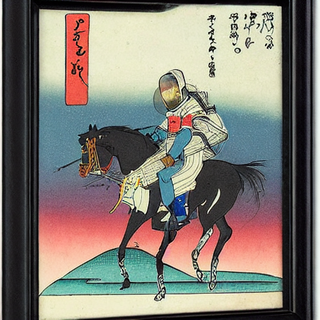Multimodal interaction provides the user with multiple modes of interacting with a system. A multimodal interface provides several distinct tools for input and output of data.

In machine learning, feature learning or representation learning is a set of techniques that allows a system to automatically discover the representations needed for feature detection or classification from raw data. This replaces manual feature engineering and allows a machine to both learn the features and use them to perform a specific task.
Neural machine translation (NMT) is an approach to machine translation that uses an artificial neural network to predict the likelihood of a sequence of words, typically modeling entire sentences in a single integrated model.

A transformer is a deep learning architecture developed by Google and based on the multi-head attention mechanism, proposed in a 2017 paper "Attention Is All You Need". Text is converted to numerical representations called tokens, and each token is converted into a vector via looking up from a word embedding table. At each layer, each token is then contextualized within the scope of the context window with other (unmasked) tokens via a parallel multi-head attention mechanism allowing the signal for key tokens to be amplified and less important tokens to be diminished. The transformer paper, published in 2017, is based on the softmax-based attention mechanism proposed by Bahdanau et. al. in 2014 for machine translation, and the Fast Weight Controller, similar to a transformer, proposed in 1992.
Bidirectional Encoder Representations from Transformers (BERT) is a language model based on the transformer architecture, notable for its dramatic improvement over previous state of the art models. It was introduced in October 2018 by researchers at Google. A 2020 literature survey concluded that "in a little over a year, BERT has become a ubiquitous baseline in Natural Language Processing (NLP) experiments counting over 150 research publications analyzing and improving the model."
Seq2seq is a family of machine learning approaches used for natural language processing. Applications include language translation, image captioning, conversational models, and text summarization. Seq2seq uses sequence transformation: it turns one sequence into another sequence.
Generative Pre-trained Transformer 3 (GPT-3) is a large language model released by OpenAI in 2020.
The machine learning-based attention method simulates how human attention works by assigning varying levels of importance to different words in a sentence. It assigns importance to each word by calculating "soft" weights for the word's numerical representation, known as its embedding, within a specific section of the sentence called the context window to determine its importance. The calculation of these weights can occur simultaneously in models called transformers, or one by one in models known as recurrent neural networks. Unlike "hard" weights, which are predetermined and fixed during training, "soft" weights can adapt and change with each use of the model.

DALL·E, DALL·E 2, and DALL·E 3 are text-to-image models developed by OpenAI using deep learning methodologies to generate digital images from natural language descriptions known as "prompts".
Wu Dao is a multimodal artificial intelligence developed by the Beijing Academy of Artificial Intelligence (BAAI). Wu Dao 1.0 was first announced on January 11, 2021; an improved version, Wu Dao 2.0, was announced on May 31. It has been compared to GPT-3, and is built on a similar architecture; in comparison, GPT-3 has 175 billion parameters — variables and inputs within the machine learning model — while Wu Dao has 1.75 trillion parameters. Wu Dao was trained on 4.9 terabytes of images and texts, while GPT-3 was trained on 45 terabytes of text data. Yet, a growing body of work highlights the importance of increasing both data and parameters. The chairman of BAAI said that Wu Dao was an attempt to "create the biggest, most powerful AI model possible"; although direct comparisons between models based on parameter count do not directly correlate to quality. Wu Dao 2.0, was called "the biggest language A.I. system yet". It was interpreted by commenters as an attempt to "compete with the United States".. Notably, the type of architecture used for Wu Dao 2.0 is a mixture-of-experts (MoE) model, unlike GPT-3, which is a "dense" model: while MoE models require much less computational power to train than dense models with the same numbers of parameters, trillion-parameter MoE models have shown comparable performance to models that are hundreds of times smaller.
A vision transformer (ViT) is a transformer designed for computer vision. A ViT breaks down an input image into a series of patches, serialises each patch into a vector, and maps it to a smaller dimension with a single matrix multiplication. These vector embeddings are then processed by a transformer encoder as if they were token embeddings.
Perceiver is a transformer adapted to be able to process non-textual data, such as images, sounds and video, and spatial data. Transformers underlie other notable systems such as BERT and GPT-3, which preceded Perceiver. It adopts an asymmetric attention mechanism to distill inputs into a latent bottleneck, allowing it to learn from large amounts of heterogeneous data. Perceiver matches or outperforms specialized models on classification tasks.
Prompt engineering is the process of structuring an instruction that can be interpreted and understood by a generative AI model. A prompt is natural language text describing the task that an AI should perform.
A foundation model is a machine learning or deep learning model that is trained on broad data such that it can be applied across a wide range of use cases. Foundation models have transformed artificial intelligence (AI), powering prominent generative AI applications like ChatGPT. The Stanford Institute for Human-Centered Artificial Intelligence's (HAI) Center for Research on Foundation Models (CRFM) created and popularized the term.

Stable Diffusion is a deep learning, text-to-image model released in 2022 based on diffusion techniques. It is considered to be a part of the ongoing artificial intelligence boom.

A text-to-image model is a machine learning model which takes an input natural language description and produces an image matching that description.

Generative pre-trained transformers (GPT) are a type of large language model (LLM) and a prominent framework for generative artificial intelligence. They are artificial neural networks that are used in natural language processing tasks. GPTs are based on the transformer architecture, pre-trained on large data sets of unlabelled text, and able to generate novel human-like content. As of 2023, most LLMs have these characteristics and are sometimes referred to broadly as GPTs.
A large language model (LLM) is a computational model notable for its ability to achieve general-purpose language generation and other natural language processing tasks such as classification. Based on language models, LLMs acquire these abilities by learning statistical relationships from vast amounts of text during a computationally intensive self-supervised and semi-supervised training process. LLMs can be used for text generation, a form of generative AI, by taking an input text and repeatedly predicting the next token or word.
Whisper is a machine learning model for speech recognition and transcription, created by OpenAI and first released as open-source software in September 2022.
Mamba is a deep learning architecture focused on sequence modeling. It was developed by researchers from Carnegie Mellon University and Princeton University to address some limitations of transformer models, especially in processing long sequences. It is based on the Structured State Space sequence (S4) model.









